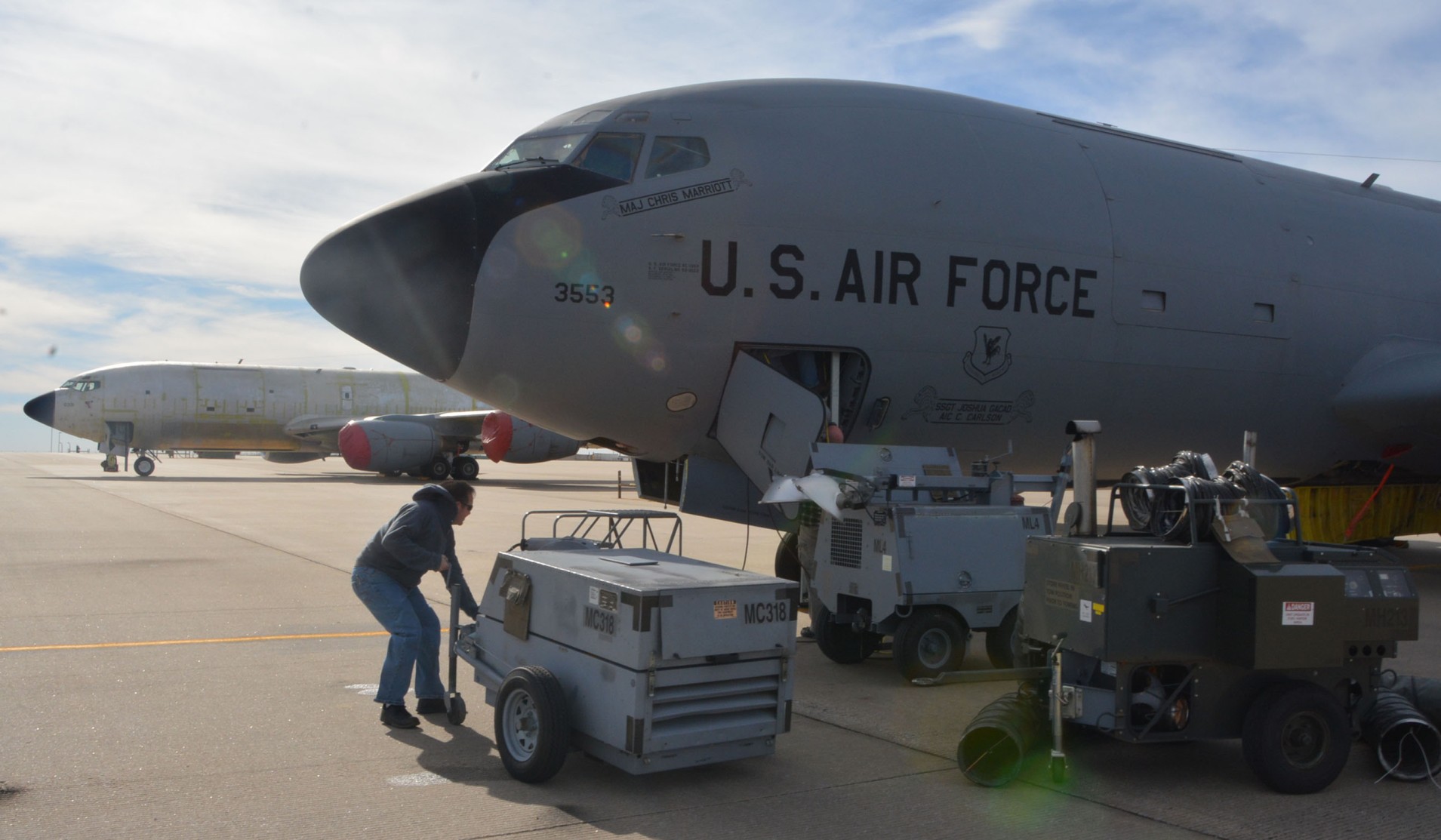TINKER AIR FORCE BASE: KC-135R Stratotankers operated by the 507th Air Refueling Wing are scheduled to be the first Air Force Reserve Command tankers to be retrofitted with the new KC-135 Block 45 upgrade at the Oklahoma City Air Logistics Complex here in February 2016.
The latest KC-135 upgrade, called Block 45, will completely remodel the inside of the flight deck with new liquid crystal display or LCD panels, a new radio altimeter, new auto pilot, new digital flight director and other computer module updates.
The first round of aircraft modifications are complete and jets are being flown out of McConnell Air Force Base, Kan. Due to the changes in the cockpit, aircrews will be required to obtain certifications in the upgraded jets to resume daily operations.
Block 45 is the third series of major modifications designed to add capability to the aging KC-135 fleet. The KC-135 is often referred to as the “work horse” of the air refueling fleet, and these aircraft must stay mission capable for many years. This upgrade keeps the KC-135 fleet updated and viable as the Air Force is in the process of acquiring the newest air refueler, the KC-46A Pegasus.
Air Force Reserve pilots in the 465th Air Refueling Squadron here said they are excited about the new upgrades which will increase situational awareness for the aircrews and overall safety during aerial refueling missions.
According to the Legacy Tanker Division here which manages the Block 45 program, the $910 million program is vital in keeping the KC-135 fleet flying for the next 20 years.
Col. Martin O’Grady, Legacy Tanker Division chief, said the upgrade reduces equipment failures and promotes operational efficiency.
“The modification to the KC-135 is important for several reasons,” said O’Grady. “The upgrade allows for more efficient air traffic management activities, improves system safety by creating key system redundancy and reduces the logistics footprint with utilization of more reliable avionics components.”
Reliability and availability of parts and gauges is another reason for the upgrade as some components are no longer manufactured for the 50-year old aircraft.
Daniel Witt, a Senior Avionics Engineer in the Legacy Tanker Division, highlighted the importance of avionics upgrades that will allow the KC-135 to have a fully digital integrated cockpit. The glass LCD will replace numerous flight instruments that are nearly obsolete.
“These upgrades significantly improve reliability, reduce maintenance actions, and provide supportability beyond 2030,” Witt said. “We also get updates on the software that will allow us to continue to support the KC-135 in the future.”
O’Grady said the program has truly been a team effort.
“This is a program with multi-organization stakeholders including Air Mobility Command, Edwards Air Force Base, Calif. and our industry partner Rockwell Collins,” said O’Grady. “Without stakeholder collaboration, we would not have been successful.”
Modification of approximately 400 KC-135s began in 2014 and is scheduled to be complete by 2026 with the first AFRC KC-135 upgrades beginning in 2016.











